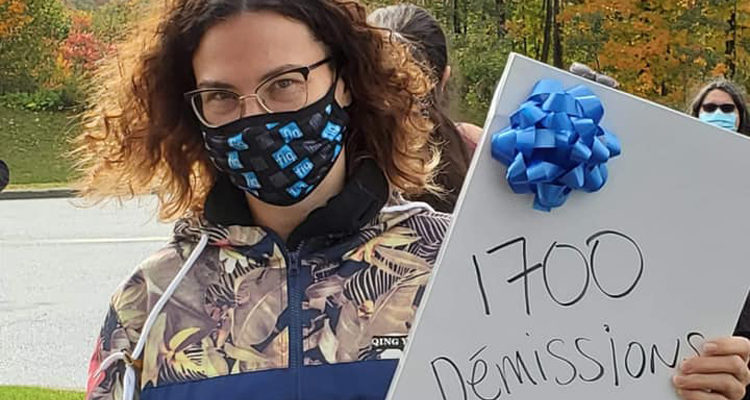
The CAQ has been in power for two years and yet nothing has changed
This morning, healthcare professionals loudly marked the CAQ’s second year in government outside Quebec Premier François Legault’s office in Montreal, outside Deputy Prime Minister Geneviève Guilbault’s constituency office in Quebec City, and outside of the president of the Conseil du trésor Sonia Lebel’s office in Trois-Rivières.
Healthcare professionals came bearing “gifts.” They brought the elected officials expired personal protective equipment, resignation letters and disability leave certificates to remind the government that healthcare professionals have reached their limit and that, after two years in office, they haven’t seen their working conditions or the quality or safety of care improve in the least.
Unfulfilled promises
One of the CAQ’s campaign promises was to eliminate mandatory overtime. Unfortunately, this inhumane management method is still being used to hold healthcare professionals hostage. Since the spring, healthcare professionals’ massive departures have been a clear sign that the government hasn’t done what’s necessary.
The provincial negotiations underway present an opportunity for the CAQ to fulfil another of its promises, i.e., to “review the patient to nurse ratio.” However, negotiations have reached a stalemate, even though for months now the FIQ and FIQP have been hammering home the message that there is an urgent need to implement safe healthcare professional-to-patient ratios in CHSLDs and private subsidized institutions (EPC) to prevent another wave of deaths like the one that hit in the spring.
The government is remaining silent on the matter, despite the tragic number of deaths we saw during the first wave of COVID-19. Many reports say the same thing: health care isn’t safe because healthcare professionals are assigned too many patients at once. What is the government waiting for to build a health network where patients are safe?